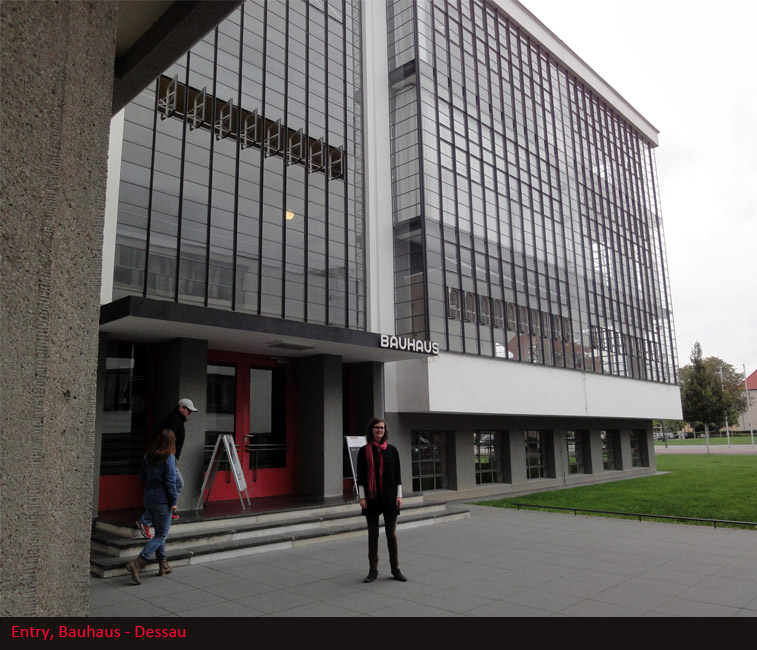Floors and ground make up a building user’s most common tactile interaction with a building, although these feelings come from the feet and are easily taken for granted. Floors and groundplanes most often are designed to not interrupt the flow of movement – to be easy and pleasant to walk on. Not so in our first example.
The Jewish Museum
Adaptation of an ancient paving technique – cobblestones – made for the most purposefully uncomfortable walk we had during the Conference. Randomly sized and shaped, rounded cobblestones form the tactilely-distorted ground at the Jewish Museum, where discomfort and unease are primary elements in the Garden of Exile. The groundplane serves, even more than the threatening concrete pillars surrounding the garden, to burden the visitor with a painful experience. The ground brings the experience of exile immediately into life.
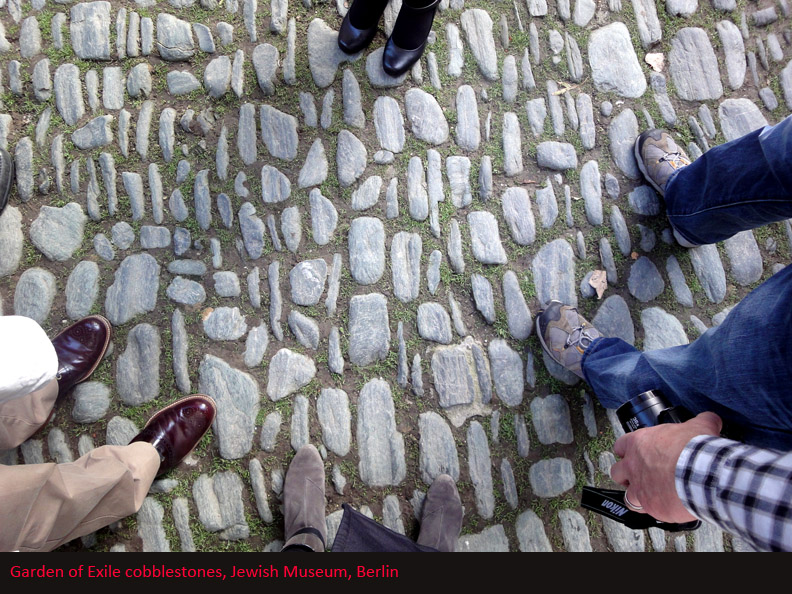
Round cobblestones are awkward for walking, and standing on – our group didn’t linger here.
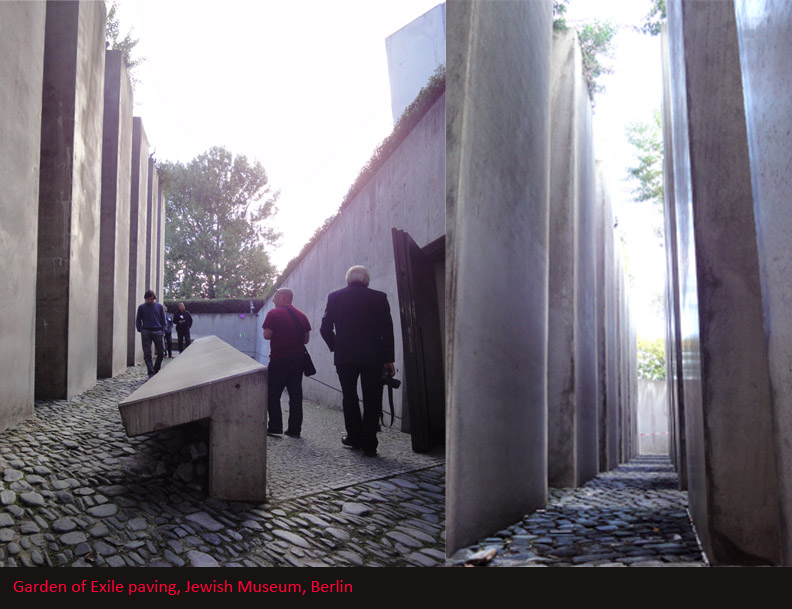
This older way of paving was not often seen during the AIA Committee on Design Origins of Modernism Conference, September 2013. More typically, we experienced floors in Germany’s Modernist and contemporary buildings with highly engineered natural materials, with stone, tile and hardwood seen most frequently. On sidewalks, stone in two main sizes occurs frequently in combination. Sand is featured on streets where a more permeable interaction with the outdoors is desired. Concrete is widely used, whether sealed or stained. We saw carpeting used in offices, and conference rooms, where acoustic treatment is more important. Concrete and carpet are not the topic of discussion in this article, as the treatment of stone is more distinct as a flooring and paving language.
The Bauhaus – Dessau
The entry to the Bauhaus Dessau, by Walter Gropius, 1925 – 1926, carries the exterior dark stone in from the outside 3 steps. The stone differs from the medium-gray, cut stone covering the sidewalk in color and finish.

The entry stairs run down to a stone tiled café and bookstore with a similarly dark color. We saw dark, stone floors frequently throughout the Origins of Modernism Conference.
More large-format, stone flooring appears in the Jewish Museum, Berlin, in the older part of the Museum.
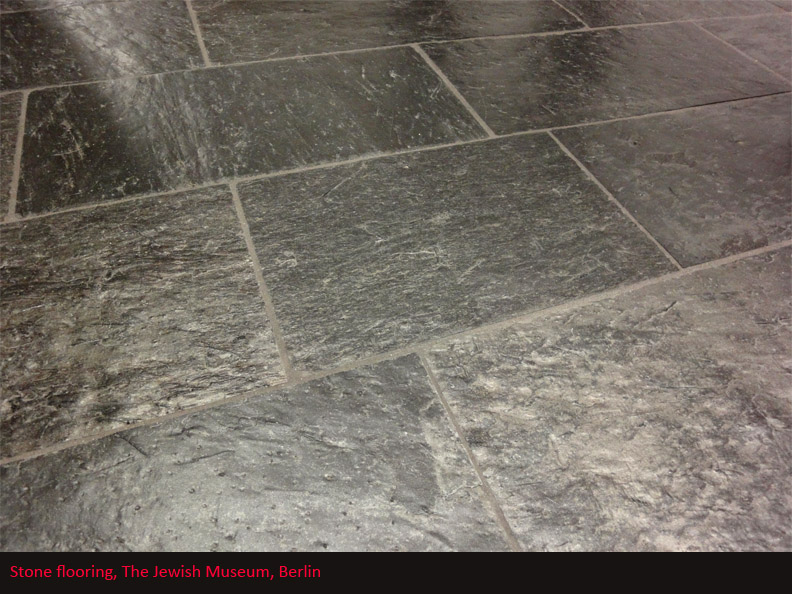
We saw a modern version of this stone floor in the DZ Bank, by Frank O. Gehry.
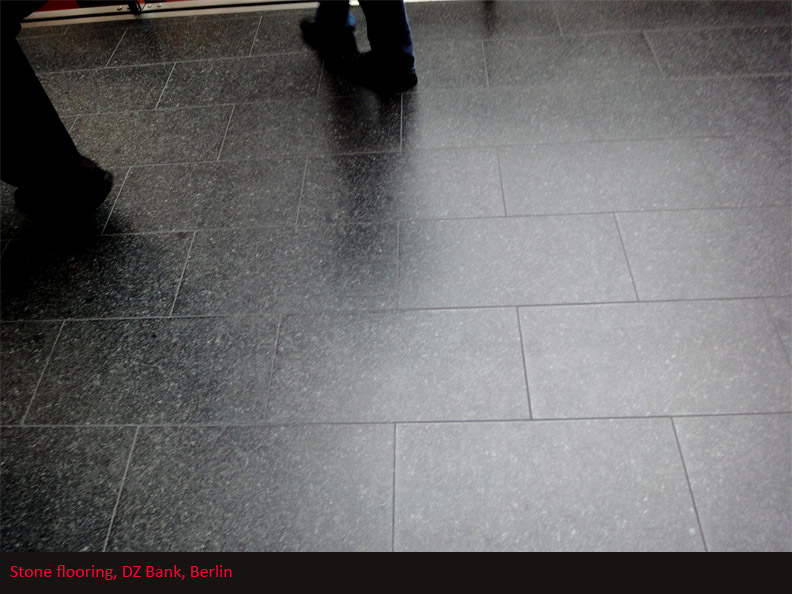
These finishes are durable, long-lasting and precisely cut and installed. The floors match the aesthetic goals of the Bauhaus, demonstrating rigorous design and craftsmanship.
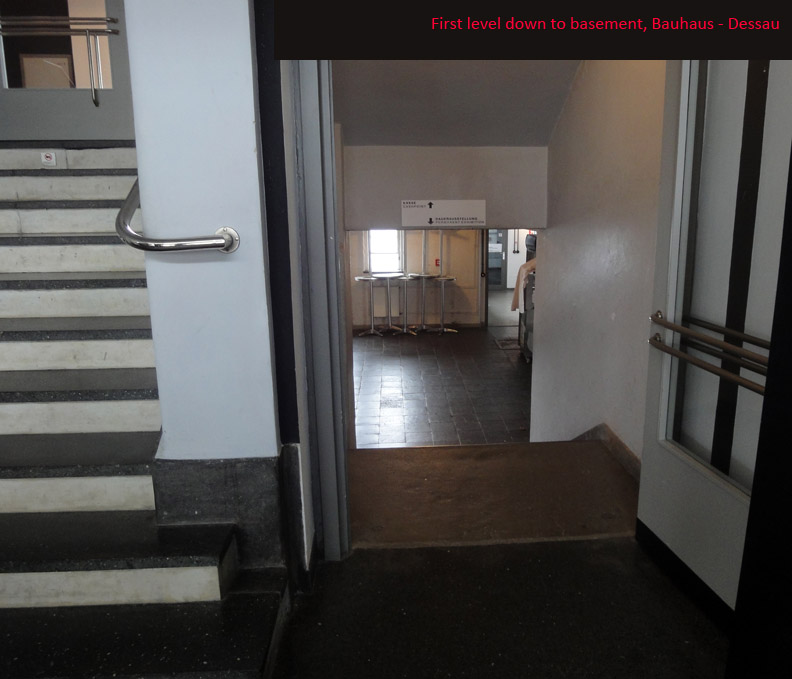
An uppermost floor of the Bauhaus is made of concrete, and appears to have patterning which suggests that adhesives and perhaps a resilient floor will be applied on top of the floor slab as part of the ongoing restoration of the historic building (http://www.bauhaus-dessau.de/english/home.html ).
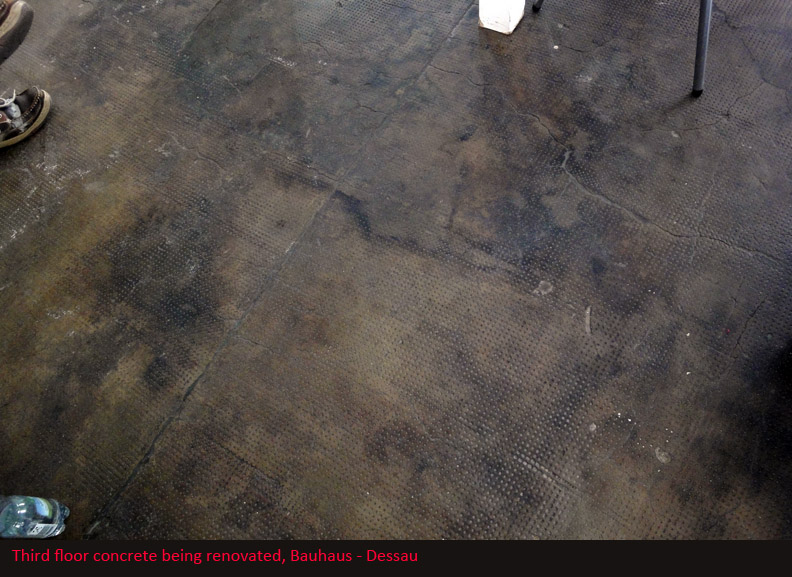
The more public second floor of the Bauhaus features patterned terrazzo, which accents the door layout of the room and complements the lighting.

Das Umweltbundesamt, Dessau
The floor striping is echoed in a newer building in Dessau, the Das Umweltbundesamt. It’s a few minutes away from the Bauhaus, by car. Beige paving stones flow through from the groundplane outside, although the outside stones are rougher-hewn than those inside. Dark patterning marks the area around the doors themselves, and approximately 1’ - 0” wide gray lines. Those lines, too, run inside the building through the central atrium. The patterning is creative, free-flowing and harmonious.
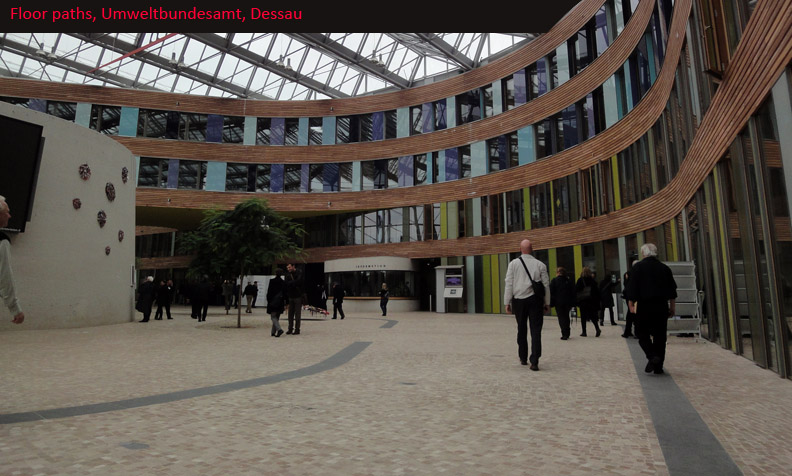
Newly sited in Dessau is the Umweltbundesamt, an office building for about 800 employees of the environmental agency for the German government. Designed by Sauerbruch / Hutton, the building’s users are primarily commuters, many from Berlin. The facility opened in 2005, and its estimated cost, including geothermal heating systems, and building photovoltaics, was 68 million Euros.
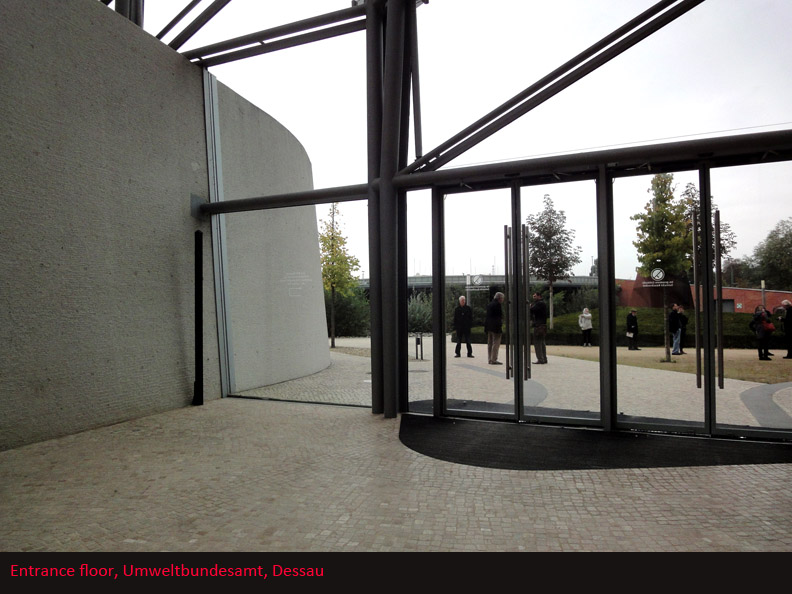
Trees grow inside the paved atrium in diagonal-shaped gravel pits.

Das Umweltbundesamt’s beige, stone floor shows us a cobblestone paving module size that is seen throughout Berlin. Paving, known as pflasterstein, is done often with quartz porphyry; this stone was the most common sidewalk material throughout the buildings which were a part of the conference. According to some Germans I spoke with during the conference, this stone was historically quarried and finished in Germany, or Europe. Now, however, some of it may be imported from China or other Asian countries, where labor costs are lower.
Small Size Paving Module
This small size module was sometimes abutted with sand, or a larger, square paving module. We saw this small- and large-paving module at the Brandenburger Tor (http://www.berlin.de/orte/sehenswuerdigkeiten/brandenburger-tor/ ).
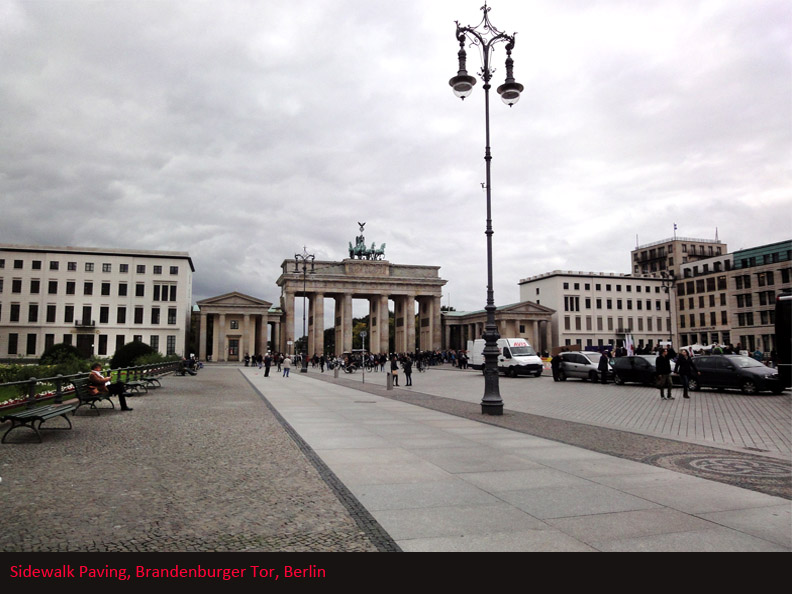
We saw it at the Sony Center (http://www.sonycenter.de/ .
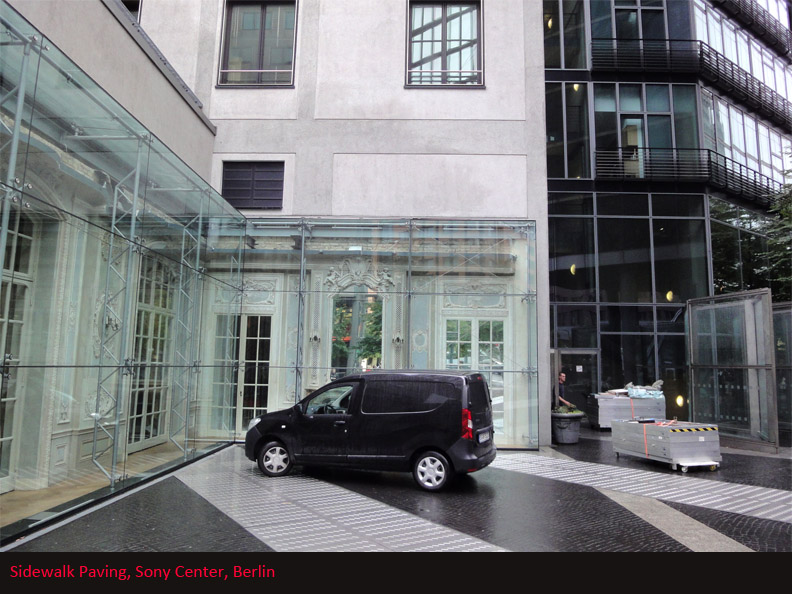
And we saw it at the Reichstag…(http://www.bundestag.de/kulturundgeschichte/architektur/reichstag/ )
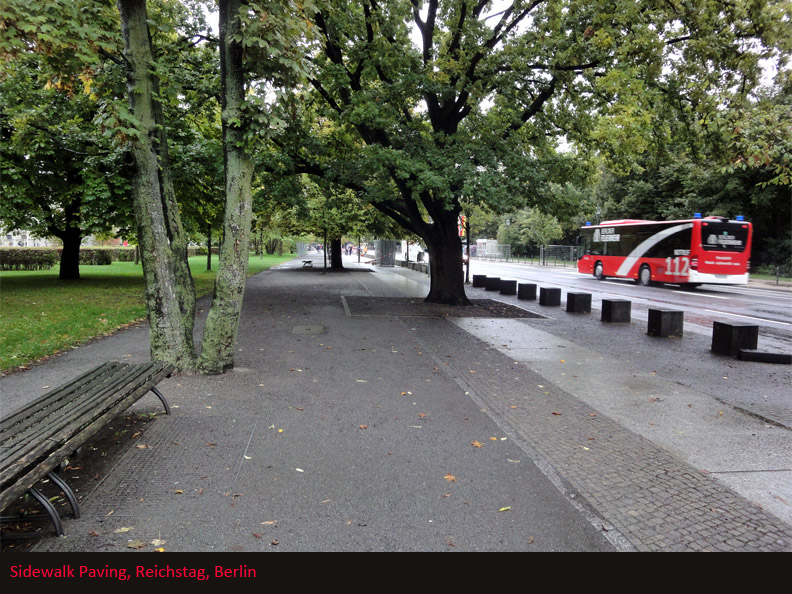
And along the Federal Ribbon, the Bundestag Library… (http://www.bundestag.de/htdocs_e/documents/library/index.html )
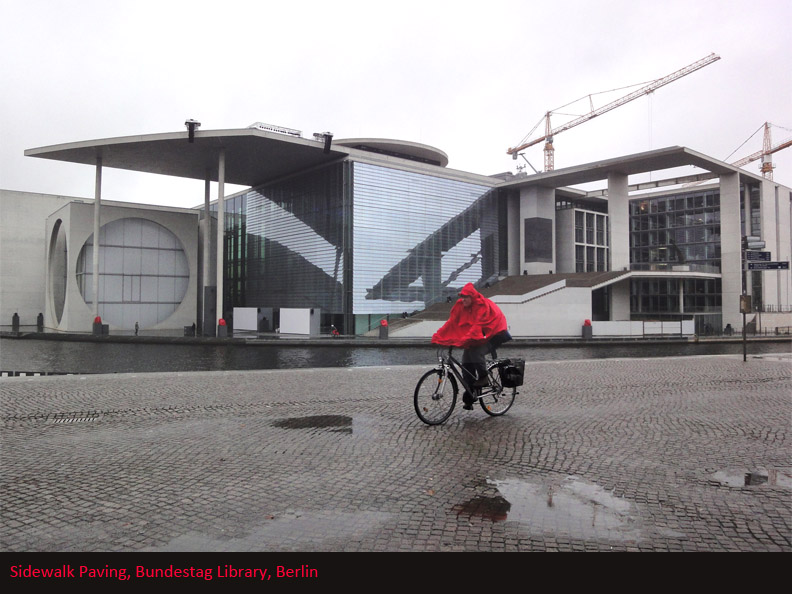
At the Konzerthaus…(http://www.konzerthaus.de/ )
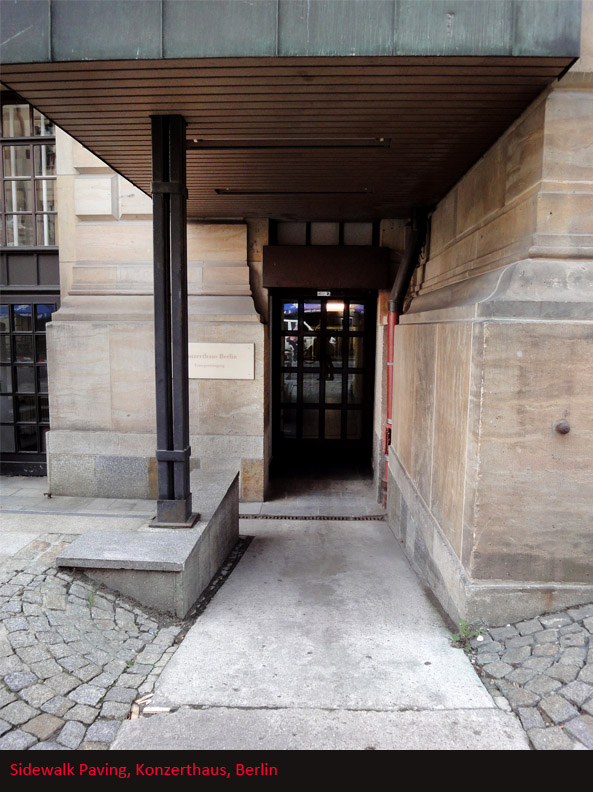
And the Bebelplatz…(https://www.berlin.de/orte/sehenswuerdigkeiten/bebelplatz/ )
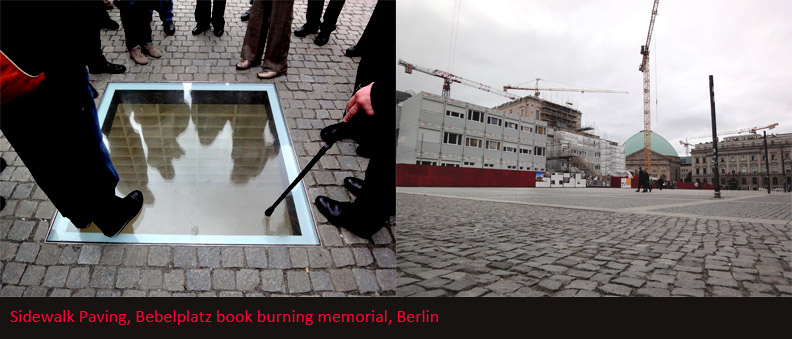
It’s the flooring inside the Neue Wache memorial near Bebelplatz (http://www.visitberlin.de/de/ort/neue-wache ).

The sidewalks in Dessau…
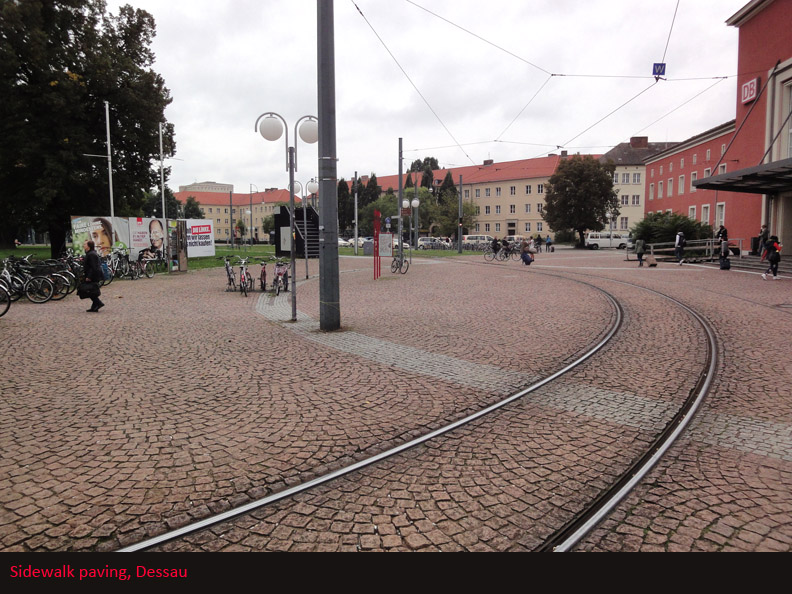
…And the buildings we began with in Dessau echo all of Berlin’s paving, although Dessau is approximately 1.5 hours by car to the south and west.
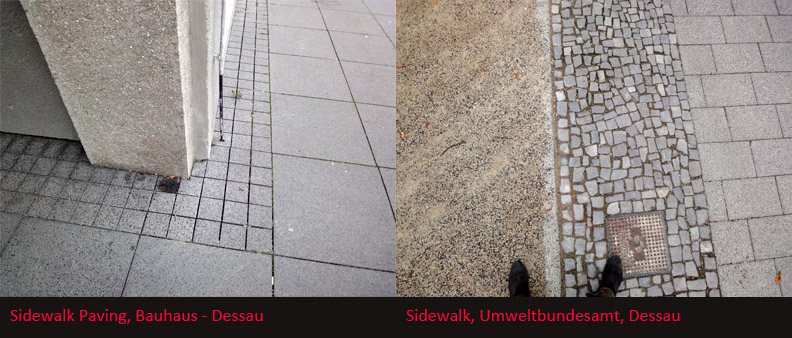
We saw similar variety within the same paving language at the Bauhaus – Berlin.

Large Scale Paving
The larger, flat, stone pavers were seen at many locations around the city, including Potsdamer Platz.
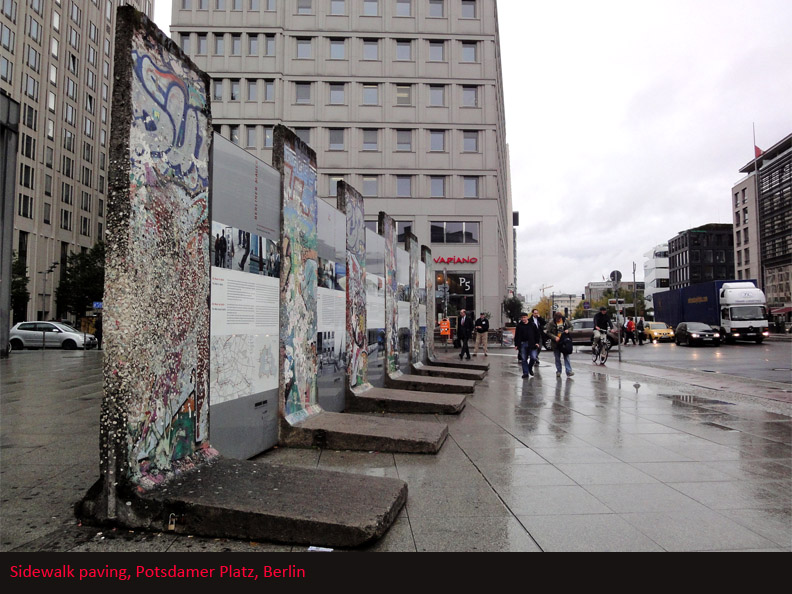
Large-format paving is the walkway outside the main entrance at the Neues Museum, Berlin.

And, as we saw at the Umweltbundesamt in Dessau and around the benches at the Reichstag, sand is used in many outdoor settings.

In all cities, there is incredible variety among this primary, tactile plane of design. These examples demonstrate one of the common dialects of paving – and flooring – in Berlin and Dessau.
Hi, Mom!
